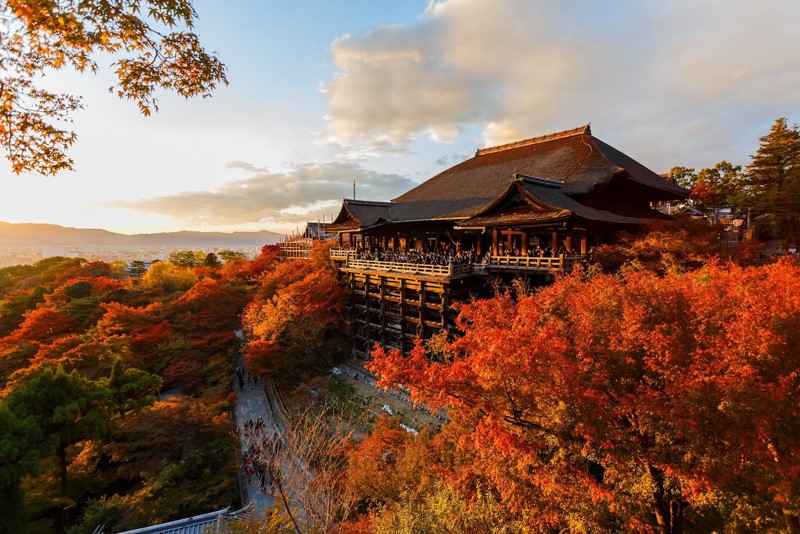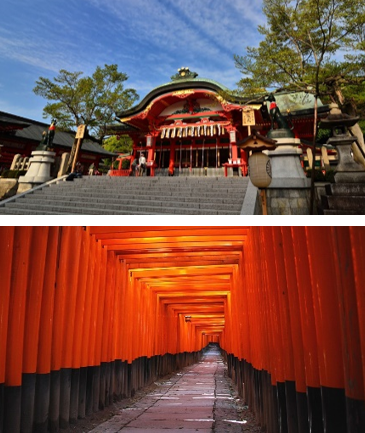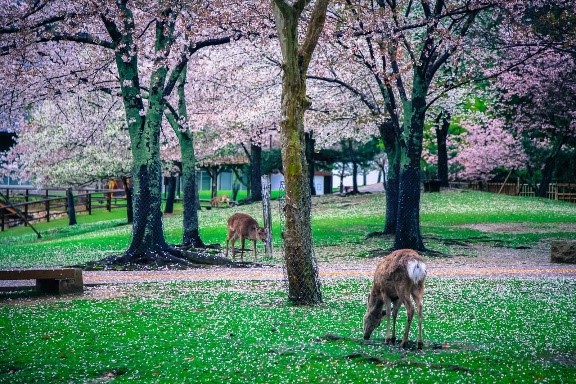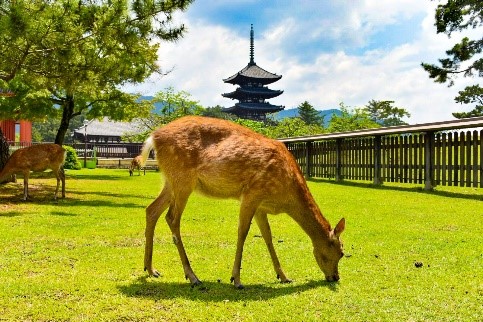Visit to Kyoto
May 17,
2026 (Sunday) 9:10~18:00
(Tip: Please arrive at Kyoto Station at 9:10 a.m. The
following places are for reference, and the final schedule should be
adjusted to the actual notice. Lunch is at your own expense)
(10:00-14:30) Morning Visit
Kiyomizu-dera
 Kiyomizudera
is one of the most celebrated temples of Japan. It was founded in
780 on the site of the Otowa Waterfall in the wooded hills east of
Kyoto, and derives its name from the fall's pure waters. The temple
was originally associated with the Hosso sect, one of the oldest
schools within Japanese Buddhism, but formed its own Kita Hosso sect
in 1965. In 1994, the temple was added to the list of UNESCO world
heritage sites. Kiyomizudera is best known for its wooden stage that
juts out from its main hall, 13 meters above the hillside. The stage
affords nice views of the numerous cherry and maple trees below that
erupt in a sea of color in spring and fall, as well as of the city
of Kyoto in the distance. The main hall, which together with the
stage was built without the use of nails, houses the temple's
primary object of worship, a small statue of the eleven faced,
thousand armed Kannon.
Kiyomizudera
is one of the most celebrated temples of Japan. It was founded in
780 on the site of the Otowa Waterfall in the wooded hills east of
Kyoto, and derives its name from the fall's pure waters. The temple
was originally associated with the Hosso sect, one of the oldest
schools within Japanese Buddhism, but formed its own Kita Hosso sect
in 1965. In 1994, the temple was added to the list of UNESCO world
heritage sites. Kiyomizudera is best known for its wooden stage that
juts out from its main hall, 13 meters above the hillside. The stage
affords nice views of the numerous cherry and maple trees below that
erupt in a sea of color in spring and fall, as well as of the city
of Kyoto in the distance. The main hall, which together with the
stage was built without the use of nails, houses the temple's
primary object of worship, a small statue of the eleven faced,
thousand armed Kannon.
Fushimi Inari Taisha
 Also
known as “O-inari-san”, Inari shrines are the most familiar shrines
to Japanese people.here are said to be some thirty thousand
throughout the country, frequented by people of all ages. ushimi
Inari Taisha is the head shrine with which all the others are
affiliated. n the 1300 years since its establishment in 711AD,
people have gathered here to pray for bountiful harvests, business
prosperity, the safety of their home and family and the fulfillment
of all kinds of other wishes.In recent years, the shrine’s Japanese
worshippers have been joined by overseas visitors coming to pray or
tour the shrine. Fushimi Inari Taisha is now known worldwide as one
of the most iconic sights in Kyoto, and in Japan as a whole.
Also
known as “O-inari-san”, Inari shrines are the most familiar shrines
to Japanese people.here are said to be some thirty thousand
throughout the country, frequented by people of all ages. ushimi
Inari Taisha is the head shrine with which all the others are
affiliated. n the 1300 years since its establishment in 711AD,
people have gathered here to pray for bountiful harvests, business
prosperity, the safety of their home and family and the fulfillment
of all kinds of other wishes.In recent years, the shrine’s Japanese
worshippers have been joined by overseas visitors coming to pray or
tour the shrine. Fushimi Inari Taisha is now known worldwide as one
of the most iconic sights in Kyoto, and in Japan as a whole.
(14:30-16:00)Nara Park
 Nara
Park is a large park in central Nara. Established in 1880, it is the
location of many of Nara's main attractions including Todaiji,
Kasuga Taisha, Kofukuji and the Nara National Museum. It is also
home to hundreds of freely roaming deer.
Nara
Park is a large park in central Nara. Established in 1880, it is the
location of many of Nara's main attractions including Todaiji,
Kasuga Taisha, Kofukuji and the Nara National Museum. It is also
home to hundreds of freely roaming deer.
Considered the messengers of the gods, Nara's over 1000 deer have
become a symbol of the city and have even been designated as a
natural treasure. Deer crackers are for sale around the park, and
some deer have learned to bow to visitors to ask to be fed. Nara's
deer are surprisingly tame, although they can be aggressive if they
think you will feed them, so make sure not to tease them with food.

The deer that live in Nara Park are wild animals that have been
designated as natural treasure of Japan. Approximately 1,300 deer
live in the park. These deer are not domesticated, but visitors can
feed them with special deer crackers.
(17:30) Arrive at Shinsaibashi
 Shinsaibashi
is a district in the Chūō-ku ward of Osaka, Japan and the city's
main shopping area. At its center is Shinsaibashi-suji (心斎橋筋), a
covered shopping street, that is north of Dōtonbori and Sōemonchō,
and parallel and east of Mido-suji street. Associated with
Shinsaibashi, and west of Mido-suji street, is Amerika-mura, an
American-themed shopping area and center of Osaka's youth culture.
Major stores and boutiques concentrates are found around the area.
Shinsaibashi is easily accessed via the subway.
Shinsaibashi
is a district in the Chūō-ku ward of Osaka, Japan and the city's
main shopping area. At its center is Shinsaibashi-suji (心斎橋筋), a
covered shopping street, that is north of Dōtonbori and Sōemonchō,
and parallel and east of Mido-suji street. Associated with
Shinsaibashi, and west of Mido-suji street, is Amerika-mura, an
American-themed shopping area and center of Osaka's youth culture.
Major stores and boutiques concentrates are found around the area.
Shinsaibashi is easily accessed via the subway.
(18:00) Back to Kyoto Station personally



